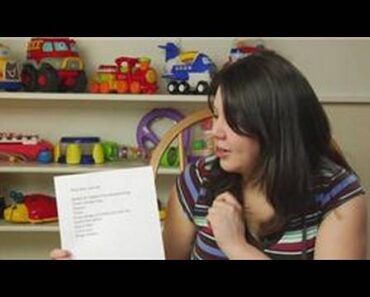image: iStock
Congenital softening of the larynx tissues (voice box) located above the vocal cords is called laryngomalacia. This is the most common congenital anomaly of the larynx and the most common cause of stridor (high-pitched breathing sound) in infants.
Babies with laryngomalacia may have noisy breathing due to floppy and malformed laryngeal structures falling over and partially blocking the airway opening. Babies with severe eating and breathing difficulties may need prompt surgical interventions.
Read this post to learn about the causes, symptoms, treatment, and outcomes of laryngomalacia in babies.
Causes Of Laryngomalacia In Babies
The exact cause of laryngomalacia is unknown. This condition usually results from birth defects in the larynx (voice box). Lack of muscle tone in the upper airway may contribute to this defect. Laryngomalacia can be congenital (present at birth) in most babies. However, some babies may develop it within the first few months of life
(1).
There are no known genetic or environmental factors that may result in laryngomalacia in babies. It means this condition is not known to run in the family.
Signs And Symptoms Of Laryngomalacia In Babies
Although babies with congenital laryngomalacia may have symptoms from birth, this may often become obvious in the initial weeks of life. Audible breathing sounds while inhalation can be the main symptom of laryngomalacia. The breathing noise may often worsen when the baby sleeps on their back, cries, or eats.
The common signs and symptoms of laryngomalacia may include the following (2).
- Stridor or noisy breathing
- Feeding difficulties
- Poor weight gain
- High-pitched sound
- Choking while feeding
- Cyanosis (blue color)
- Cessation of breath (apnea)
- Pulls in the chest and neck while breathing
- Aspiration (inhale food into lungs)
- Gastroesophageal reflux, causing increased vomiting or spit up
Does Laryngomalacia Go Away?
Although symptoms can be present at birth and become more evident in the first few weeks, this may resolve over time in most babies. Usually, the noisy breathing may improve around four to eight months, and most babies may outgrow the condition by 18 to 20 months of age. Laryngomalacia commonly persists beyond the second birthday in babies with Down syndrome (3).
Babies with severe laryngomalacia for more than 20 months can be treated with surgery. Although the symptoms can disappear, some babies may have laryngeal lesions. It may cause the baby to develop noisy breathing during intense physical activities later in life.
Diagnosis Of Laryngomalacia
Physical examination of the oral cavity, nose, and neck is done to rule out other conditions, such as cleft palate, cleft lip, and glossoptosis, since these often contribute to feeding and breathing problems.
The following tests are often ordered to confirm the diagnosis (4).
- Nasopharyngolaryngoscopy (NPL): This test helps to visualize the voice box using a tiny camera.
- X-ray of chest and neck: Images of neck and chest help reveal other tracheal or airway problems.
- Airway fluoroscopy: This test uses X-ray imaging to analyze the lung functions and any other airway abnormalities resulting in stridor.
- Microlaryngoscopy and bronchoscopy (MLB): This procedure uses a thin, long tube with a camera (endoscope) to look at the airways. The voice box and the main airway passages (bronchi) are observed during this test.
- Esophagogastroduodenoscopy (EGD) with pH analysis: This test helps to look at gastroesophageal regurgitation, and the pH test confirms the presence of stomach acid in the esophagus.
- Functional endoscopic evaluation of the swallow (FEES): This procedure uses an endoscope to observe the swallowing functions. Pediatric dysphagia (swallowing difficulty) can be seen in most laryngomalacia cases.
Although most babies may outgrow this condition, tests are ordered to plan the management strategies. Pediatricians recommend the best available treatments for your baby based on the severity of symptoms.
Treatment For Laryngomalacia In Babies
Most babies with mild conditions are conservatively managed, while surgical interventions are recommended for severe cases. The treatment for laryngomalacia in babies may include the following (5).
1. Conservative management
Not all babies with laryngomalacia require medical or surgical interventions. Mild cases are conservatively managed until it is possible. The measures in this treatment may include the following.
- Observation is recommended for infants with moderate or mild stridor without feeding issues
- Weight gain and growth of the baby are regularly monitored
- Changing feeding positions and thickening of formula feed is suggested for babies with mild feeding difficulties
Some babies with oxygen saturation below 90% may receive supplemental oxygen. Other home therapies are not recommended for laryngomalacia.
2. Medications
Medications are not given to treat laryngomalacia but conditions that may exacerbate it. Antireflux medications, such as H2 blockers (ranitidine, famotidine), are often prescribed for babies with acid reflux or GERD. Acid reflux may worsen an already compromised airway’s functions by causing swelling and inflammation.
3. Surgical treatment
Babies with severe laryngomalacia and poor growth may require surgical management. Common indications for laryngeal surgery may include:
- Failure to thrive
- Severe obstructive sleep apnea
- Hypoxemia (less oxygen in the blood)
- Elevated carbon dioxide levels
- Pulmonary hypertension
- Right-sided heart failure (cor pulmonale)
Supraglottoplasty is an initial surgical treatment for babies with severe symptoms. During this surgery, obstructive tissues are removed to stabilize the airway opening. Usually, babies may have some symptoms for a week or two after surgery. If it persists, you may seek medical care.
Sometimes, the surrounding mucosal areas on the epiglottis and the tongue’s base can be stabilized using a laser surgery technique called epiglottopexy. This is usually done for infants with severe laryngomalacia.
When Should You Be Concerned?
Although laryngomalacia is not a life-threatening condition in most babies, the pediatrician should evaluate all cases of noisy breathing in infants. Early treatment or conservative management may help the babies achieve optimal growth and development.
You may seek immediate medical care if your baby with laryngomalacia has the following symptoms
(1).
- Cyanosis (blue) around the lip with noisy breathing
- Not breathing more than ten seconds
- Breathing noises are louder or more frequent than usual
- Pulls in the chest or neck along with breathing and not relieved by repositioning or awakening the baby from sleep
You may also pay attention to the baby’s feeding habits and weight gain. If they develop feeding difficulties, seek pediatric care.
How To Help The Baby With Laryngomalacia?
Laryngomalacia is not a preventable condition. You may also need to take the following precautions while feeding since they have an increased risk for aspiration and reflux
(1).
- Hold your baby in an upright position during feeding and after 30 minutes after feeding to prevent spit-up or reflux.
- Never give a feeding bottle to the baby when they are lying on their back.
- Gently burp your baby after each feeding session.
- Give a recommended portion of food to avoid regurgitation due to overeating.
- Feed more frequently to meet caloric and nutrient needs in babies with feeding difficulties.
- Keep the baby’s head a little up while they sleep with a towel to make them breathe easier.
Let your baby sleep on their back unless the pediatrician recommends trying other sleeping positions. Laying on the back is safe for babies since they can have an increased risk of sudden infant death syndrome if they sleep on their tummy.
Although laryngomalacia in most babies can be conservatively managed, those with severe symptoms may require immediate surgical interventions to have optimal growth and development. Never hesitate or delay childhood vaccinations due to airway noise. You may continue the regular follow-ups as recommended by the pediatrician for long-term care.


































